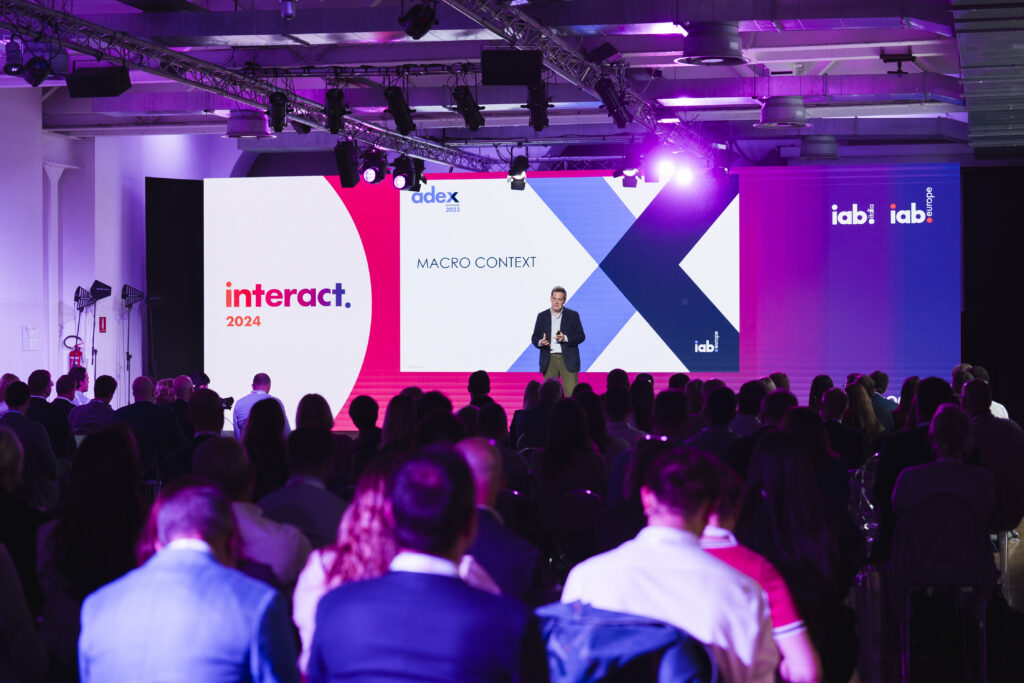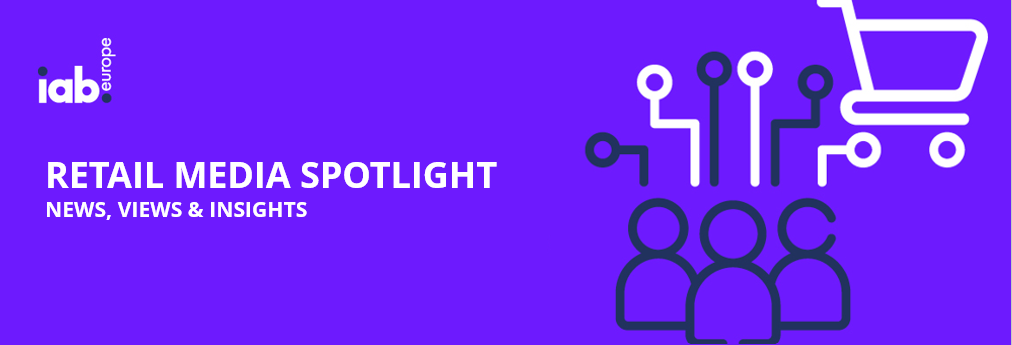As Retail Media cements its place as a core revenue stream for retailers and a must-have in brand marketing strategies, many retailers are looking to take their first steps into this fast-growing space. But launching, or even scaling, a Retail Media Network (RMN) can feel overwhelming without a clear starting point.
To support those just beginning their journey, we asked members of our Retail & Commerce Media Committee to share their expert insights on what retailers need to know. From building a strong data proposition to navigating internal challenges and prioritising measurement, this Q&A offers foundational guidance to help new entrants set up for long-term success.
Thank you to the following contributors, for sharing their thoughts and expertise:

Katie Streeter Hurle, Chief Strategy Officer, SMG

Tim Abraham, Senior Director, Data Partnerships, The Trade Desk

Larisa Dumitru, Head of eCommerce EMEA, GroupM
Katie - “I’d advise retailers to talk to their brands first. What would they like to see? What does good like to them? Ultimately, they’re your first customers and will be a critical part of informing your proposition. Next up, look at the market. Where do you fit in, and how do you offer something that’s perhaps missing from existing offers? Finally, make a choice about where you have the capabilities in-house to do this and where you’ll need partnerships. There’s expertise in the market that could help you accelerate progress fast, whilst the market is in growth.”
Tim - “First and foremost, retailers need to make sure that nothing they do with customer data will damage that most trusted relationship. The key question then is which “buyer profiles” the retailer wishes to address. For example, media agency buyers versus brand trade marketing versus non-endemics, to maximise Retail Media Network (RMN) revenue and margin. In particular, this means providing a Retail Media proposition that fits with mid-funnel and upper-funnel omnichannel media campaigns. The final consideration will be how the retailer brings its offering to market, and who will be selling and operating campaigns.”
Larisa - “Before launching or growing a Retail Media offering, retailers need to be super clear on what makes them stand out and how they’ll actually help brands hit their goals - whether that’s driving sales, building awareness, or winning share of shelf (or all of the above, ideally). They also need to make sure they’ve got the tools, data, and reporting to prove it’s working and are transparent about what the roadmap is.”
Larisa - “To build a strong data proposition, retailers need to start by recognising the value of the data they already have — things like what customers are buying, how often they shop, and what influences their decisions. This step is often overlooked, but it’s critical: understanding the power of your own data is the foundation for giving brands the insights they need to connect better with shoppers.
From there, it’s about organising the data so it’s easy and safe for brands to use, while making privacy and security non-negotiable. Setting clear rules around data access and protecting customer trust will help create a platform that brands are comfortable and excited to invest in and grow with.”
Tim - “Different buyers have different needs. A traditional shopper marketing buying approach has a stronger bias towards incremental sales lift and less towards brand preference metrics. Other buying approaches might treat return on ad spend (ROAS) as the means to compare performance between buys, even if there is no incrementality component. For others, retailers need to provide an off-site, self-serve solution that allows them to leverage retail data across their omnichannel media plans. Retailers don’t need to do everything on day one – it is critical to have a clear narrative of what problem each part of their RMN proposition is solving.”
Katie - “Measurement needs to be available on day one. It doesn’t need to be sophisticated necessarily, but standard, baseline metrics (for on-site, in-store, and off-site) are all critical now. When advertisers see the direct impact of their campaigns, confidence builds, and a clear measurement plan not only validates RMNs externally but also makes the RMN team accountable for results from launch. Once the basics are in place, you’ll of course then need a roadmap to scale your measurement offer and build depth in it.”
Tim - “In the earlier stages of Retail Media, investment was tightly coupled with broader retailer or supplier trade marketing relationships. But now, brands must prove the value of Retail Media investments as they would for any other media strategy. Retailers are uniquely able to do this by providing outcomes-based measurement. Ideally, this goes beyond ROAS to consider incremental sales lift and, where possible, shows the impact of running across multiple RMN channels (e.g., the impact that off-site has on on-site). A note of caution, however: Retailers shouldn’t overlook measurement solutions that show the value of Retail Media on upper funnel metrics.
Larisa - “If retailers want to tap into serious media budgets, they need to start acting like true media owners - and that means bringing real measurement rigour into everything they do. Brands like Unilever expect clear proof that their investment is delivering business outcomes, not just reach or visibility. Measurement shouldn’t be an afterthought; it should be built into the strategy from day one, with clear KPIs, transparent reporting, and a commitment to optimising performance.”
Katie - “In my experience, retailers can face internal barriers moving at pace. Whether that’s signing off new contracts, launching new capabilities, working with legal or DPO teams, it’s genuinely hard to make progress fast because resources aren’t always there and Retail Media is a new part of the business. Figuring out how to unblock those pipes to bring new propositions to market quickly is vital. Secondly, Retail Media necessitates a totally different way of working with brands, which can take time to influence, and retailers have to learn a whole new language. In a normal retailer-supplier relationship, there’s a commercial and trading dynamic that sometimes favours the retailer. In a RMN, the supplier brand is the client/customer and will invest only if the opportunity will genuinely deliver results. This needs a very different way of working and a completely different level of servicing.”
Tim - “The challenge we most commonly hear from retailers is securing internal buy-in and support for bringing a Retail Media solution to market. Retailers are rightly cautious about how data is used, and this is reflected in demanding the highest standards of governance. A second common challenge is developing a business model that covers operational expenditure, such as software as a service (SaaS) technology fees. These costs can grow quickly, particularly people costs associated with managed service solutions, where retailers manage campaign execution.”
Katie - “You have a second mover advantage right now, don’t underestimate this! You can look at where you follow the ‘market playbook’ that has been established by the early and mature RMNs to drive growth quickly. But equally, many new RMNs will be launched from smaller businesses or wider commerce players who are naturally very agile. There’s a great opportunity to differentiate and cut into the market in new ways too.”
Tim - “Perhaps a deceptively simple piece of advice is to be customer-centric! We regularly hear from retailers that their key objective is to deliver an incremental margin back to their core business. This can be achieved as a win-win compared to reduced media wastage and better return on investment for advertisers. However, retailers should understand that brands will expect RMN solutions to meet the standards of control, independence, and consistency that are demanded from other media options.”
Larisa - “Start by putting brands at the centre of your thinking. Understand what they need — real results, trusted data, clear measurement — and build your Retail Media offering around helping them succeed, not just selling ad space. Collaborating with media agencies from the outset is key too; they can help you shape your offerings, align with brand goals, and drive the right results. If you focus on delivering real value to brands and work closely with agencies, everything else — investment, partnerships, growth — will follow.”
For more information on IAB Europe’s Retail and Commerce Media work and how you can get involved, please visit our Retail Media Hub here or contact Marie-Clare Puffett at puffett [at] iabeurope.eu.

In this week's member guest blog post we hear from Callum Smith, Head of Marketing Solutions EUI at TikTok, as he explores the power of creativity in B2B marketing, and why it’s time to ditch dull for impactful.
Every August, Edinburgh transforms into a creative playground. The Fringe is the world’s
largest arts festival ‒ a living, breathing celebration of bold ideas, unexpected moments, and
unforgettable performances. For audiences, it’s a fantastic place to discover new voices and to
be immersed in the best of culture and the arts. But for performers? It’s something else
entirely.
With over 4,000 acts performing more than 50,000 shows, competition is fierce. There are no
guarantees. No pre-booked seats. Just a sea of hopeful performers trying to stand out and
capture attention. To succeed, they must be memorable, engaging, and ‒ critically ‒ uniquely
themselves. Sound familiar?
Because in many ways, TikTok is the Royal Mile of the digital world. Every scroll is a decision:
watch or skip, engage or move on. And much like the Fringe, audiences come to TikTok looking
for serendipitous discovery, inspiration, and entertainment.
But in B2B marketing, we're facing a problem. Read on to find out what it is ‒ and how we fix it.
In the B2B marketing world, a lot of ads are really dull and boring. Recent research from Peter
Field and System1 titled The Cost of Dull revealed that:
And I get it, I’m a B2B marketer. I understand most of the stuff that we do is boring. But
there’s a problem to that: it costs us money. Data suggests that uninspired creative could mean
spending up to £10 million extra each year just to match the results you could have achieved
with more creative impact. To put that in perspective: that’s the equivalent of two Super Bowl
spots or nearly two billion TikTok impressions ‒ lost to mediocrity.
So, creativity isn’t just a nice-to-have; it’s essential to making a real impact and seeing a
return.
And there's an even bigger problem facing short-form video advertisers. Let me introduce you to
the arch-nemesis, the boss at the end of the game, the person that you have to consistently fight
against: the finger. Because if you make really really boring advertising that someone has the
ability to skip right past, then it may as well have not existed in the first place.
System1’s recent research proves that better creative equals better ROI. Not marginally better
‒ exponentially better. The more emotionally engaging your ad, the more effective it is. That’s
why creativity is absolutely mission critical in B2B advertising. [2]
Every great piece of content starts with one question: What’s in it for the viewer? Whether it’s
a 15-second ad or a Fringe flyer handed out on the Royal Mile, success lies in value exchange. If
we can surprise, delight, entertain or resonate ‒ we earn attention.
TikTok is unique because it offers intimacy and active attention. Users are incredibly leaned in ‒
it's not a second screen; it's an immersive full-screen, sound-on platform ‒ and that gives B2B
brands an incredible opportunity to connect, but only if we deliver content that truly captivates.
We need fleshed-out characters. Jeopardy. Emotion. Storytelling. These aren’t just tools of
theatre ‒ they’re the tools of effective short-form video creative.
When you embrace a broader perspective on just how effective creative can be, you can better
understand the true return on your creative investments and use this knowledge to create more
impactful content ‒ and with less. That’s what we call Return on Creative.
This is a piece of work we developed with IAB Europe as an antidote to the relentless pursuit of
ROI. Don't get me wrong: ROI is fantastic ‒ we all know how vital profit is ‒ but when we make
ROI the only metric that matters, we sometimes sacrifice the bigger picture, which can be really
powerful.
Return on Creative expands the definition of value. It’s not just about conversions. It’s about:
And much, much more.
It’s a path to ROI ‒ not a departure from it. So let’s raise the bar for B2B. Let’s stop settling
for dull. And let’s start treating creativity as the performance lever it truly is. Dive into the
thought paper here to learn more and to step into your brand's creative era.
Sources

As Retail Media cements its role at the heart of digital advertising strategies, understanding how it's being adopted and where it’s heading next has never been more important.
That’s why our Retail & Commerce Media Committee is launching the second edition of our Attitudes to Retail Media in Europe Survey. And we’re calling on industry professionals across the ecosystem to contribute their views.
Whether you're a retailer, advertiser, or agency, your insights will help map the current state of play, spotlight investment trends, and uncover the opportunities and challenges shaping the future of Retail Media in Europe.
Why Take Part?
In just 10 minutes, your input can:
All responses are confidential and anonymous, and there’s room to share any additional thoughts you feel are important.
🗓️ Deadline: Friday, 6th June
📝 Take the Survey Now
Your perspective is essential. Join us in guiding the next wave of Retail Media growth across Europe.
For more information on IAB Europe’s Retail and Commerce Media work and how you can get involved, please visit our Retail Media Hub here or contact Marie-Clare Puffett at puffett [at] iabeurope.eu.

As the digital advertising industry navigates rapid change, Interact 2025 promises to deliver the clarity and direction needed for the journey ahead. Taking place on 20th-21st May at nHow Brussels, Belgium, our flagship event will bring the industry together to explore the forces shaping the future. And it all kicks off with the highly anticipated release of the 2024 AdEx Benchmark Report.
In our opening keynote, our Chief Economist, Daniel Knapp, will unveil the latest insights from our AdEx Benchmark Report, the industry’s definitive guide to digital ad spend across 28 European markets. Building on a record year in 2023, Daniel will reveal the new numbers, trends, and opportunities that defined the digital advertising landscape in 2024 and will drive the industry in 2025 and beyond.

Last year’s report and opening presentation revealed an industry in robust health and dynamic transformation:
Will Europe's digital ad market continue to grow? Will new channels like Retail Media and CTV solidify their positions? How are brands and agencies adapting to economic uncertainties?
Join us at Interact 2025 to be among the first to find out.

Following Daniel’s keynote, Alison Keith, Global Head of Media Excellence at Kraft Heinz, will provide the advertiser’s perspective on the results. Through an exclusive fireside chat, she’ll share how Kraft Heinz is navigating these market shifts, the channels and innovations fuelling their growth, and strategies for driving creativity, brand building, and measurement excellence.
Together, these two sessions will set the tone for two days packed with strategic insights, innovative thinking, and the conversations that will shape digital advertising’s future.
Under the theme 'Digital Skylight – Clarity and Purpose for 2025 and Beyond,' Interact 2025 will bring together Europe’s digital leaders to explore the economic, social, and technological forces shaping the industry. Through inspiring keynotes, deep-dive workshops, and enhanced networking experiences, Interact will empower attendees to drive progress and innovation.
🗓️ Dates: 20th-21st May 2025
📍 Location: nHow Brussels, Belgium
View the agenda here.
Check out our speaker lineup here.
See who our sponsors and partners are here.
Use code iabeu10 to unlock our limited-time ticket offer: just €782 + VAT – first come, first served!
Be the first to hear the numbers. Be part of the conversation. Be ready to shape the future.
On 24th April 2025, IAB Europe hosted an insightful Transparency & Consent Framework (TCF) 101 webinar, created to offer a practical introduction to one of the digital advertising industry’s most important compliance tools.
Led by Gosia Kowalska, Privacy & Compliance Manager at IAB Europe, the session delivered a clear and comprehensive overview of the TCF, highlighting its role in supporting compliance across the digital advertising ecosystem. Gosia walked attendees through how the TCF works, why it matters, and which types of companies can benefit from adopting it – from publishers and vendors to CMPs (Consent Management Platforms).
Participants also had the opportunity to engage in a live Q&A, where Gosia addressed common queries, offering valuable clarity on how the TCF can facilitate compliance with regulatory requirements and operational needs in today's privacy landscape.
Missed the live session?
Good news – the webinar recording is now available on demand! You can watch it at your convenience and gain practical insights into how the TCF can support your company’s compliance journey.
Ready to Join the TCF?
If your organisation is looking to demonstrate a commitment to privacy, build trust with users, and meet legal requirements, joining the TCF is a vital step. The process is straightforward:
Find out everything you need to know about becoming a TCF participant here: How to Join the TCF
Access Supporting Materials
To make your onboarding easier, we have developed a range of resources to support companies throughout their TCF implementation journey:
All these resources and more can be found on our dedicated page:Supporting Materials for TCF
Stay tuned for more educational initiatives and updates to help you navigate privacy and consent requirements confidently. Whether you are just starting your TCF journey or are looking to enhance your implementation, IAB Europe is here to support you every step of the way.

With Interact 2025 just a few weeks away, we’re shining a spotlight on some of the must-attend sessions from this year’s agenda, including one of the hottest topics in digital advertising: Retail Media. From future-facing keynotes to hands-on insights from leading retailers, this year's programme offers a deep dive into the forces shaping the Retail Media landscape across Europe.
Taking place on 20th-21st May 2025 at nHow Brussels in Belgium, Interact is our flagship conference, bringing together leaders from across the digital advertising ecosystem. Under the theme ‘Digital Skylight – Clarity and Purpose for 2025 and Beyond’, this year’s event will explore how our industry can navigate a fast-changing landscape shaped by economic uncertainty, regulatory shifts, and technological advancements.
Find out more about the event here, and discover what to expect on the topic of Retail Media at the event below.

Joining the mainstage morning sessions, Colin Lewis will bring his wealth of knowledge and global perspective on Retail Media to the Interact stage. Colin’s talk is called “Retail Media Reloaded: Its time to talk about creativity, collaboration and effectiveness in Retail Media”
His keynote at Interact will offer an unmissable outlook on the Retail Media landscape in Europe, laying out how brands and retailers can create the next wave of impact in Retail Media.
Colin is from Retail Media Works, a consultancy that advises both brands and retailers on Retail Media strategies. He will be drawing from his direct experience working with brands and retailers around the globe such as Barilla, Fonterra, Optimum Nutrition, Superdrug, Very Group Ocado (UK) , Migros (Turkey), Cencosud (Chile), Terry White Chemmart (Australia) and the Warehouse Group (New Zealand) to address the hottest topics such as creativity, effectiveness, collaboration, and performance.
Colin is a long-standing thought leader in marketing around the world:
Talking about his keynote at the conference, Colin said:
"Retail media isn’t just growing — it’s growing up. And to grow up, Retail Media has to embrace its role in driving results for brands through creativity and effectiveness, at the same time as breaking down silos in both retailers and advertisers to drive collaboration. Drawing from my hands-on experience working with retailers and brands, I’m aiming to show the way forward for the next phase of Retail Media growth in Europe."
In the afternoon, the conversation will continue with a dedicated workshop session titled State of the Nation – Retail Media. This in-depth segment is designed to equip you with a clearer understanding of the forces shaping the space, highlighting everything from growth trajectories to practical opportunities.
Here’s what to expect:
Whether you’re a retailer, brand, agency, or tech provider, this spotlight is your gateway to understanding (and influencing) the future of Retail Media in Europe.
Interact 2025 isn’t just about thought leadership; it’s a place to connect, collaborate, and build the future together. With a packed agenda that includes the release of the AdEx Benchmark Results, deep-dive discussions, and evening networking events, this is one event you’ll want in your calendar.
Access Our Limited Time Offer: First come, first served - use the following code to get your tickets for €782 + VAT - iabeu10
View the Full Agenda
Check out the speaker lineup
Get Your Tickets

Anastasiya Baydachenko, CEO of IAB Ukraine, continues to share her firsthand experiences of navigating life and the digital advertising industry in Ukraine during wartime. This week, we have an update on the situation on the ground. As always, our thoughts are with our colleagues and the people of Ukraine.
On the 94th day after Donald Trump promised to end the war in 24 hours, Kyiv and several other cities in Ukraine were once again subjected to a massive attack.
215 air targets were launched by the aggressor, of which 112 were shot down, 68 drones were lost in location. This means 35 weapons reached their targets. The price is too high. Since the targets were civilian infrastructure, in particular, one ballistic missile directly hit a residential building, more than 75 people were injured in Kyiv alone, at least 8 people died, including 2 children from the same family.

The police and emergency services were the first to arrive. They are helping people to get out. People in pajamas, carrying pets, many injured. This house is completely destroyed and cannot be restored. In total, about 12 houses were damaged and 1 metro station, which has not yet been fully repaired after the previous attack, a private university and the central registry office. Debris from the downed targets damaged cars, non-residential buildings and a park area, several fires on the roofs of houses were extinguished.
Since the strike and until now, while emergency workers are clearing the rubble, here and there mobile phones are ringing from under the rubble. These are relatives and friends trying to contact those who lived in the completely destroyed house.

In the morning, a teacher and children came, whose classmate cannot be contacted. Every time someone is found, the children hope to see their classmate alive.
A soldier who returned from the front line lost his wife today, their 1.5-year-old daughter survived. Parents stand in tears near the fence of the crime scene, vainly calling their daughter.
From time to time, they hold a minute of silence. Fortunately, someone spoke up. There are still people under the rubble, 10 people cannot be reached. At 9 am, one man was pulled alive from the ruins of the house.
More than 30 people were hospitalised, including children. Dry statistics.
Each private tragedy of a family near that house is a painful reminder that the enemy is close. And the enemy is cynical and insidious. The enemy is targeting homes, energy infrastructure, hospitals, dams and food warehouses. And that we are being forced to come to an agreement with the enemy. But after 400 years of struggle, we know that this is impossible. Any agreement will be despised, turned into a blank piece of paper, every time the aggressor gathers strength for a new attack. There may be an illusion that we did not want peace badly enough, that we did not negotiate well, that we sent unprofessional people to the negotiations, or they were dressed in the wrong suits.
No, you simply cannot negotiate with this enemy. No one, ever.
And if it's hard to believe us Ukrainians, try to realise how quickly a modern missile would reach the western coast of Europe.
Retail Media has evolved from a trend to a cornerstone of digital advertising strategies in Europe. In 2023, Retail Media advertising in Europe grew by 22%, nearly four times faster than the total digital advertising market, which grew by 6%. Projections indicate that Retail Media advertising spend in Europe is set to reach €31 billion by 2028. As its importance grows, establishing shared standards, transparent practices, and collaborative innovation is crucial.
IAB Europe's Retail & Commerce Committee is at the forefront of this evolution, uniting industry leaders to guide Retail Media's development, shape best practices, and drive meaningful change. Key focus areas include standardisation to professionalise the Retail Media industry and overcome fragmentation; definitions and education to elevate everyone's understanding and knowledge; and market insights to equip stakeholders with the latest facts and figures. Check out IAB Europe’s Retail Media Hub to see some of the recent developments and materials including Measurement Standards for On-Site & Off-site Retail Media, In-Store Retail Media Definitions & Standards, a new Retail Media Glossary , and a dedicated podcast series interviewing members of the committee including Paul Wright, Head of International at Uber Advertising and Jessica Wegner, Senior Vice President Retail Media at Douglas.
A core group associated with our Committee is the Retailer Leaders Council - a dedicated forum for trusted exchange between retailers that fosters collaboration, drives the development of standards, and supports the growth of Retail Media across Europe.
We are therefore pleased to announce that REWE Group, JustEat, Tesco Media and Insight Platform, and OBI First Media Group have recently joined the committee and Council, adding valuable expertise, fresh perspectives, and a shared commitment to collaboration in 2025 and beyond.
REWE Group Retail Media Connect: Driving Progress Through Collaboration
Christian Raveaux, Head of REWE Group Retail Media Connect, explained their motivation for joining:

"We joined IAB Europe to actively contribute to developing standards and best practices that will shape the future of Retail Media. The Retail Media Work Track offers an essential platform for collaborating with industry leaders, sharing knowledge, and driving innovation. This year, our focus includes enhancing measurement capabilities, increasing transparency, and leveraging first-party data more effectively. We look forward to exchanging insights, building strong partnerships, and contributing to a more efficient and future-proof retail media ecosystem."
Christian's statement highlights the significance of collective action in building a robust foundation for Retail Media's future.
OBI First Media Group: Customer-Centric Marketing Through Collaboration
Patricia Grundmann of OBI First Media Group emphasised the value of community and shared purpose:

"At OBI First Media Group, we view Retail Media as a win for retailers, brands, and, most importantly, customers. Within IAB Europe, we aim to collaboratively shape the future of digital marketing by joining forces, sharing expertise, and building something greater together."
Tesco Media and Insight Platform
Florian Clemens, Strategy & Propositions Director at Tesco Media and Insight Platform, also shared their aspirations for joining:

"We're thrilled to announce that Tesco Media and Insight Platform has joined IAB Europe as a member. Together with our members, we aim to shape the future of retail media by collaborating on the development of industry standards and best practices, driving innovation and effectiveness for brands and customers alike."
This emphasis on collaboration and customer value perfectly embodies the spirit of the Retail & Commerce Media Committee's work.
As Retail Media continues to expand across Europe, shaping its future thoughtfully and inclusively becomes increasingly important. Our Retail & Commerce Committee provides a platform for contribution, connection, and leadership. For more information, contact Marie-Clare Puffett - puffett [at] iabeurope.eu or Liz Haines - haines [at] iabeurope.eu.
Ready to Get Involved? Whether you're a retailer, advertiser, or technology provider, your voice is essential in defining the future of retail and commerce media. Join us and be part of a community dedicated to building better standards, stronger partnerships, and greater impact together.

When we say Interact is the event to understand the future of digital advertising in Europe, we mean it. This year’s edition will take place on 20th-21st May in Brussels and will bring together the brightest minds, boldest brands, and sharpest strategists from across the continent - all under one roof. From big-picture economic overviews to hands-on AI demos and regulatory deep-dives, Interact 2025 is set to be packed with ideas, innovation, and invaluable networking.
View the agenda here and take a look at what a day at Interact really looks like below.
The day will kick off with a warm welcome and a high-impact opener from our Chief Economist, Daniel Knapp, as he reveals the latest results from the 2024 AdEx Benchmark Report - the definitive guide to digital ad spend across 28 markets. From format-specific insights to macroeconomic trends, it will set the tone for the day: data-led, forward-looking, and rich with opportunity.
Next, we’ll zoom in on the advertiser lens with Alison Keith of Kraft Heinz, who will provide a powerful look at how brands are navigating creativity, targeting, and media investment in a time of rapid transformation. Following that, we’ll hear the publisher perspective with Bernard Marchant, CEO of Group ROSSEL, as he spotlights how premium publishers can thrive through strategic content and monetisation models.
A much-needed coffee break will then give attendees a chance to absorb the insights and spark spontaneous hallway conversations that will continue throughout the day.
Late morning, we’ll bring you a fresh jolt of energy with Dominique Rose Van-Winther, CEO of Final Upgrade AI, taking to the stage with a live demo and crash course in AI multi-tooling. She’ll show you how to stop thinking about AI and start using it.
We’ll then move into a rapid-fire series of thought-leader talks from Colin Lewis (Retail Media Works), Tony Katsur (IAB Tech Lab), a European Commissioner, and Anastasiya Baydachenko (IAB Ukraine) - each sharing unique perspectives on what’s shaping the future of our industry.
The afternoon at Interact is where things get truly dynamic. New for this year, attendees can tailor their experience by choosing between deep-dive workshops or focused masterclasses across two breakout tracks.
Beyond the sessions, Interact truly shines in its ability to bring people together. Whether it is reconnecting with industry peers over coffee, engaging with speakers post-panel, or sharing ideas in our interactive zone, the networking opportunities will be non-stop.
Plus, with a welcome reception taking place on 20th May, and an evening networking event at Rooftop 58 overlooking Brussels to close on 21st May, there will be ample opportunities to form new partnerships and future collaborations with Pan-European leaders.
From impromptu hallway brainstorms to high-energy coffee chats, the buzz of Interact is something you have to feel to understand.
In just one day, Interact will provide you with a 360° view of the digital advertising ecosystem. From policy to privacy, investment to innovation. It’s a place where advertisers, publishers, tech providers, and regulators don’t just talk at each other — they collaborate, co-create, and help shape what’s next.
So if you’re in the business of digital advertising and want to attend, check out our event page here and secure your tickets here today!
Limited Time Offer: First come, first served - use code iabeu10 to get your tickets for €782 + VAT.

This Earth Day, we're shining a light on the passionate individuals driving sustainability efforts across the digital advertising ecosystem. To mark the occasion, we asked key members of our Sustainability Committee to share their perspectives on what sustainability means to them, why they’re committed to this mission, and what gives them hope for the future.
🌍 Watch the videos below to hear what they had to say. From personal motivations to industry milestones and forward-looking innovations, their responses highlight the collective commitment and creativity shaping a more sustainable digital future.
A big thank you to all who contribute their thoughts to this initiative:
To find out more about our Sustainability Standard Committee’s work and how you can get involved, visit our Sustainability Hub here or contact dimitris at beis [at] iabeurope.eu.

With Interact 2025 fast approaching, we’re shining a spotlight on some of the standout sessions from this year’s agenda. And artificial intelligence (AI) is just one of the great topics that will be taking centre stage.
Taking place on 20th-21st May 2025 at nHow Brussels in Belgium, Interact is our flagship conference, bringing together leaders from across the digital advertising ecosystem. Under the theme ‘Digital Skylight – Clarity and Purpose for 2025 and Beyond’, this year’s event will explore how our industry can navigate a fast-changing landscape shaped by economic uncertainty, regulatory shifts, and technological advancements.
From inspiring keynotes to hands-on workshops and inspiring masterclasses, Interact 2025 promises rich discussions, fresh insights, and actionable takeaways.
One of the biggest themes on this year’s stage? AI and the Future of Work.
Find out more about the event here, and discover what to expect on AI at the event below.

Taking to the stage to discuss all things AI at Interact, we’re excited to be joined by Dominique Rose Van-Winther, Founder of Final Upgrade, an AI-powered consultancy helping businesses unlock long-term competitive advantage through AI strategy, training, and innovation.
With over two decades of experience leading global teams at IPG, McCann, and WPP, Dominique has also spearheaded D-Central, a high-end AI consultancy, and served as the Asia-Pacific lead for The Hoffman Agency.
She currently sits on the board of Synthar AI as a Non-Executive Director and is an early investor and advocate for blockchain technology.
A passionate public speaker and AI strategist, Dominique brings a unique mix of enterprise experience, entrepreneurial drive, and deep technical understanding.
Her sessions at Interact 2025 promise to equip attendees with not only inspiration but also the tools and frameworks needed to take real action.
Forget the fluff. On the main stage on the morning of 21st May, this session will cut through the noise to uncover how AI is transforming marketing today.
In this high-energy keynote, you’ll explore:
This talk is a must for marketers, innovators, and leaders looking to harness AI’s full potential.
Ready to move ideas to action? This practical masterclass will provide the perfect follow-up to the morning’s inspiration session.
Designed to help teams embed AI in their everyday work, the masterclass will feature:
It’s the ultimate crash course in making AI work for you, regardless of where you are in your journey.
Interact 2025 isn’t just about thought leadership; it’s a place to connect, collaborate, and build the future together. With a packed agenda that includes the release of the AdEx Benchmark Results, deep-dive discussions, and evening networking events, this is one event you’ll want in your calendar.
Secure your ticket now and use code EASTERACT10 to get 10% off before 22nd April!

Welcome to the April edition of our Retail Media Spotlight. As we spring into Q2, we’re bringing you the latest updates, expert insights, and upcoming events straight from IAB Europe and our Retail & Commerce Media Committee.
This month, we’re shining a light on the launch of our brand new Guide to Sponsored Products, delivering a fresh date for our Retail Media training course, and can’t-miss conversations happening at our upcoming Great Debate.
Plus, Retail Media is taking centre stage at Interact! Don’t miss your chance to be part of the action in Brussels as Europe’s digital advertising community comes together to shape the future.
Scroll down to discover what’s new, what’s next, and how you can get involved.
Retail Media is booming, and Sponsored Products are leading the charge. With 67% of brands and agencies shifting performance budgets into this space, understanding how to buy, use, and measure Sponsored Products is essential. Our new guide offers clear, expert-backed insights and best practices to help the buy-side navigate and scale successful Sponsored Product campaigns. Don’t miss this essential resource!
We’ve also attached social graphics, so you can share the Guide with your own members and networks.
Join us in Brussels on 20-21 May for Interact 2025, where Retail Media will take the spotlight.
From a compelling keynote by Colin Lewis (Retail Media Works) on the channel’s rapid evolution and future potential, to an in-depth workshop led by our own Marie-Clare Puffett featuring insights from DOUGLAS and other industry leaders, you’ll gain a clear view of the current landscape, challenges, and opportunities shaping Retail Media in Europe.
Discover more and register below - use the code EASTERACT10 for 10% off tickets purchased before 22nd April!
Join us on 30th April at 12:00 CET for our latest virtual Great Debate: Retail Media, where industry experts will come together to tackle the biggest challenges and opportunities in the space.
Through Oxford-style debates, panels, and showcase sessions, we’ll explore how to break down silos, the role of programmatic, and why measurement is moving beyond ROAS. Hear from leaders at Allegro, Douglas, Mars, Uber Advertising, and more. Don’t miss the latest on innovation, standardisation, and certification in Retail Media! Check out the agenda here and secure your free spot below.
Want to get up to speed with the fast-growing world of Retail Media? Join our next Retail Media Essentials course on 8th July, delivered online by industry experts. In just a few hours, you’ll gain a solid understanding of key concepts, players, formats, and measurement approaches shaping Retail Media today.
Perfect for marketers, agencies, and retailers looking to build knowledge and confidence in this space. Reserve your spot now and boost your Retail Media expertise!
In a recent blog post our Retail Media Consultant, Yara Daher, discussed key findings ahead of our planned Guidelines to Sales Incrementality Measurement. She explored what incrementality means, how it differs from common proxies, and the best methods for measurement, inviting industry feedback ahead of the guide’s publication.
Check out the blog post below, and be sure to share yout feedback on this project, by taking the short survey here.
24th September 2025 | Amsterdam
Save the date for our first-ever Retail Media Impact Summit - a groundbreaking event designed to define the future of Retail Media. This one-day summit will bring together 150 senior decision-makers for keynotes, workshops, and expert-led sessions on the challenges and opportunities shaping the industry. Expect inspiring discussions, exclusive roundtables, and valuable networking.
Mark your calendar now, and stay tuned for more details coming soon!